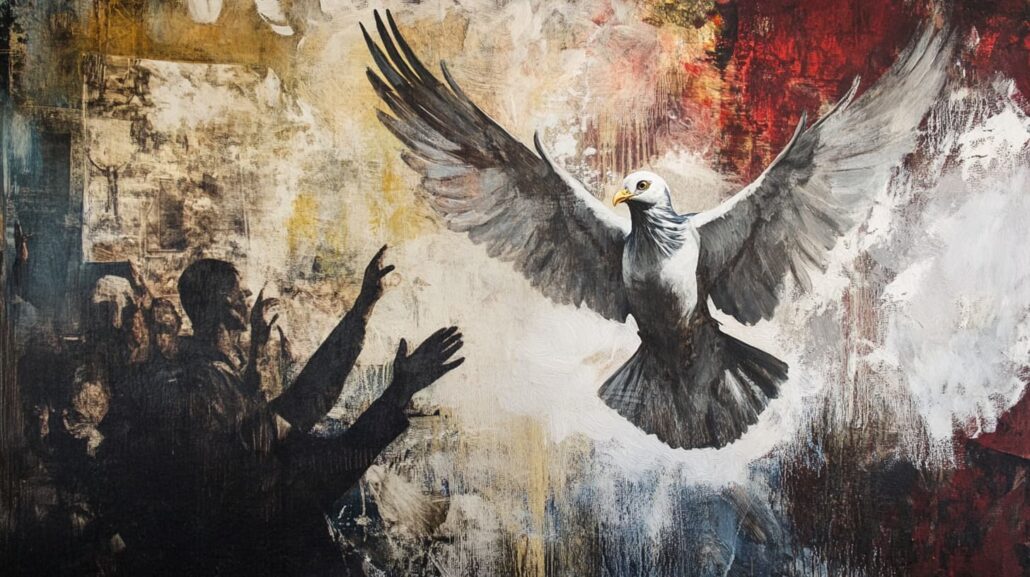In the heart of New York City, an unusual scene unfolds: a rabbi, an imam, and a Buddhist monk share tea and conversation in a newly inaugurated multifaith prayer space. This powerful image exemplifies the transformation taking place in religious communities worldwide, where ancient boundaries are giving way to bridges of understanding. The intersection of interfaith dialogue and religious freedom represents one of the most crucial developments in modern spiritual and social discourse, offering hope for a more harmonious global society while presenting unique challenges that demand thoughtful consideration.
Constitutional Bedrock of Religious Liberty
The story of religious freedom in modern democracies begins with constitutional foundations that have shaped centuries of spiritual expression and interfaith engagement. The First Amendment of the United States Constitution, with its Establishment Clause and Free Exercise Clause, stands as a model for protecting religious liberty while preventing government entanglement in matters of faith. This legal framework has evolved through numerous Supreme Court interpretations, creating a delicate balance between religious expression and civic responsibility.
Living Religious Freedom
The implementation of religious freedom protections extends far beyond constitutional theory into daily life. The Religious Land Use and Institutionalized Persons Act (RLUIPA) demonstrates how abstract principles translate into concrete protections, ensuring religious communities can establish houses of worship while accommodating the needs of diverse faith traditions. Workplace religious accommodation laws further exemplify this practical application, requiring employers to make reasonable adjustments for religious practices unless doing so would cause undue hardship.

The Evolution of Religious Tolerance
America’s Religious Awakening
The path to religious freedom in America winds through a complex landscape of persecution, experimentation, and gradual acceptance. Rhode Island’s bold experiment in religious liberty under Roger Williams marked a radical departure from the religious uniformity demanded by other colonies. This early laboratory of religious freedom demonstrated that diverse faith communities could not only coexist but thrive together, setting a precedent for future developments in religious tolerance.
Immigration and Religious Diversity
The 19th century brought unprecedented religious diversity to American shores, as waves of immigration transformed the religious landscape. Catholic and Jewish communities faced significant challenges integrating into a predominantly Protestant society, yet their experiences helped forge new paths for religious acceptance. These historical struggles continue to inform modern approaches to interfaith dialogue and religious accommodation.
Modern Interfaith Architecture
Creating Inclusive Sacred Spaces
Contemporary architects face the unique challenge of creating spaces that serve multiple faith traditions while maintaining spiritual significance for all. Modern interfaith spaces incorporate universal elements that transcend specific religious traditions: natural light, simple geometric forms, and flexible arrangements that can accommodate various worship styles. These spaces serve as physical manifestations of interfaith dialogue, demonstrating how thoughtful design can unite rather than divide.
The Digital Sacred Space
The digital age has introduced new dimensions to interfaith dialogue and sacred space. Virtual prayer rooms and online spiritual communities extend the reach of interfaith initiatives beyond physical boundaries, creating unprecedented opportunities for global religious engagement. These digital platforms complement rather than replace traditional sacred spaces, offering new avenues for spiritual expression and interfaith understanding.
The Art of Interfaith Dialogue
Creating Meaningful Connections
Effective interfaith dialogue moves beyond mere tolerance toward genuine understanding and appreciation of different faith traditions. Successful programs emphasize active listening, respect for differences, and recognition of common values. Youth initiatives play a particularly crucial role, as young people often demonstrate greater openness to interfaith engagement and innovative approaches to religious dialogue.
Women’s Voices in Interfaith Dialogue
Women’s interfaith groups have emerged as powerful forces for social change and religious understanding. These organizations often focus on practical cooperation and community service, demonstrating how shared action can strengthen interfaith bonds. Their work highlights the importance of inclusive dialogue that represents diverse perspectives within and across faith traditions.
Navigating Modern Religious Pluralism
Social Media and Religious Discourse
While social media platforms offer unprecedented opportunities for interfaith connection, they also present unique challenges. Misinformation, extremist content, and inflammatory rhetoric can undermine interfaith efforts. However, innovative digital literacy programs and online dialogue initiatives demonstrate how technology can be harnessed to promote understanding rather than division.
Interfaith Action in Communities
Some of the most successful interfaith initiatives focus on shared service projects that benefit the broader community. From disaster relief efforts to environmental stewardship programs, these collaborations demonstrate how different faith traditions can work together toward common goals while maintaining their distinct identities.
The Future of Interfaith Relations
As society becomes increasingly interconnected, the importance of effective interfaith dialogue and robust religious freedom protections grows correspondingly. Generation Z’s approach to religion and spirituality suggests evolving attitudes toward religious identity and interfaith engagement. Environmental concerns, social justice initiatives, and technological advancement continue to create new opportunities for meaningful interfaith collaboration.
The future of religious freedom and interfaith dialogue depends on maintaining the delicate balance between protecting individual religious rights and promoting collective harmony. Success requires ongoing commitment to both legal frameworks and grassroots initiatives that foster understanding across faith traditions. As religious communities navigate these challenges, the examples of successful interfaith engagement offer hope and guidance for building a more harmonious and inclusive society.

